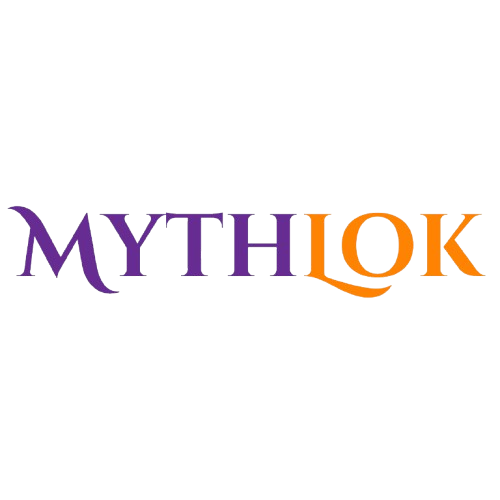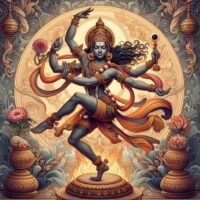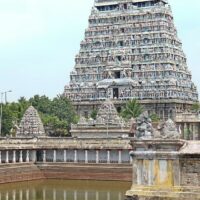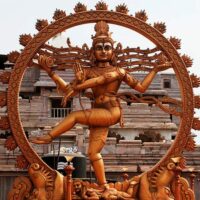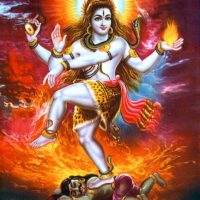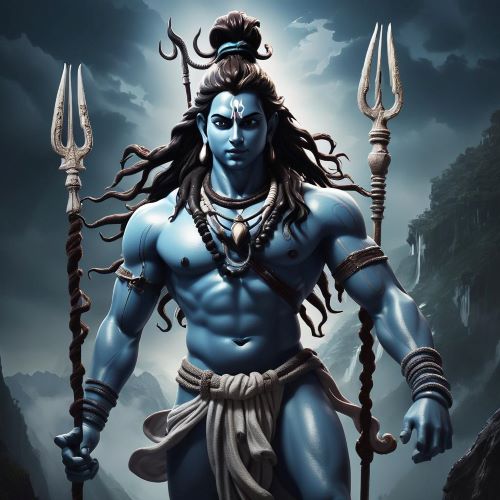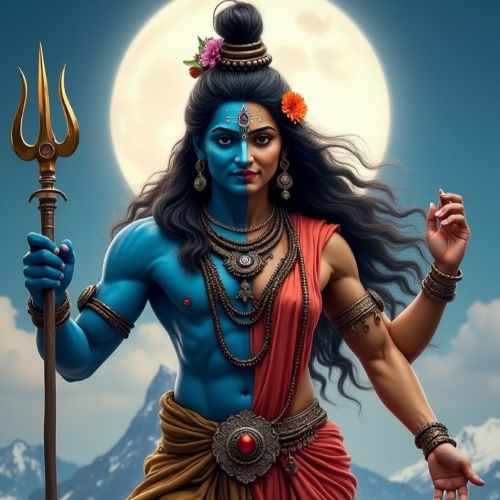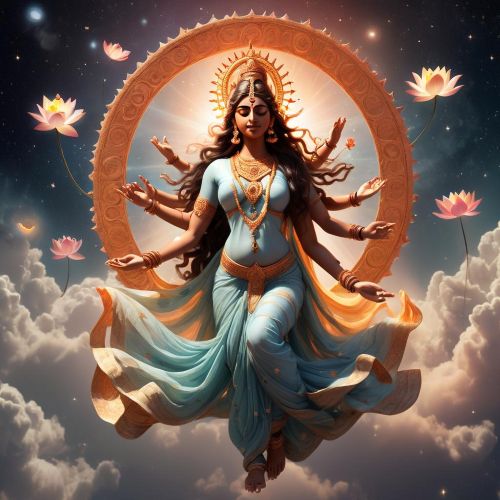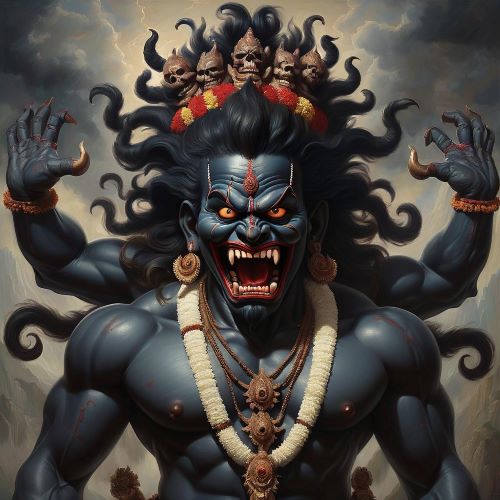Nataraja : The Cosmic Dancer
Listen
At a glance
| Description | |
|---|---|
| Origin | Indian Mythology |
| Classification | Gods |
| Family Members | N/A |
| Region | India, Cambodia, Indonesia |
| Associated With | Creation, Destruction |
Nataraja
Introduction
Nataraja, also known as Shiva Nataraja, is a revered deity in Hinduism, depicted as the cosmic dancer. His dance symbolizes the eternal cycle of creation, preservation, and destruction within the universe. This iconic portrayal has transcended religious boundaries to become a celebrated symbol of Hindu art and culture. Revered primarily within the Shaivite tradition, Nataraja’s depiction as the Lord of Dance encapsulates profound philosophical concepts of cosmic balance and spiritual liberation.
Physical Traits
Nataraja’s mesmerizing form is depicted in a dynamic dance within a circle of flames. One leg is lifted, while the other firmly presses down on the dwarf demon Apasmara. His four arms express his divine nature: one holds the damaru, symbolizing creation; another holds fire, signifying destruction; the third points to his raised foot, representing liberation from worldly bondage; and the fourth is in abhaya mudra, symbolizing protection.
Adorned with ornaments, including a serpent around his neck symbolizing primal energy, Nataraja’s flowing locks may carry the river Ganga, symbolizing his mastery over natural forces. The ring of flames surrounding him represents the cyclical nature of time and the comprehensive power of his dance.
Family
Nataraja represents an aspect of Shiva, a prominent deity in Hinduism known for his roles as both destroyer and creator within the divine trinity alongside Brahma and Vishnu. Shiva’s cosmic dance symbolizes the perpetual cycle of creation, preservation, and destruction in the universe. Parvati, Shiva’s consort, is also portrayed as Natyanataraja, embodying feminine cosmic energies alongside Shiva’s masculine force, symbolizing the harmonious balance of these energies in Hindu mythology.
Other names
Shiva, also known as Nataraja and Adalvallan in Tamil tradition, embodies the divine cosmic dancer within Hindu mythology. His multifaceted persona is celebrated through various names that highlight distinct facets of his cosmic dance. As Natesa, he is revered as the Lord of Dancers, symbolizing his mastery over rhythmic movements that dictate the cycles of the universe. The epithet Rudra Tandava portrays him in a dynamic light, depicting his dance’s power to both destroy and regenerate, reflecting the eternal flux of creation. Additionally, Ananda Tandava portrays the ecstatic bliss inherent in his cosmic dance, while Sabhanayaka underscores his authority as the lord of the celestial dance hall, where the cosmic drama unfolds.
These names not only showcase the versatility of Nataraja’s divine expression but also illustrate his central role in Hindu cosmology. Each epithet encapsulates profound philosophical concepts, emphasizing Shiva’s embodiment of cosmic balance, creative energy, and transformative power through his celestial dance. Nataraja’s dance transcends mere symbolism, embodying the essence of existence itself—a perpetual cycle of creation, preservation, and renewal that resonates throughout Hindu theology and spiritual practice.
Powers and Abilities
Nataraja’s dance, known as the “Ananda Tandava,” embodies profound symbolism that transcends mere physical movement. Each element of this cosmic dance carries deep metaphysical significance: the drum in his hand beats the rhythmic pulse of creation, while his reassuring gesture signifies protection for all beings. The fire he wields represents the transformative power of destruction, essential for renewal, while his grounded foot symbolizes his earthly presence. In contrast, his raised foot denotes liberation from the cycle of existence, illustrating his transcendence beyond worldly attachments.
Beyond its symbolic gestures, Nataraja’s dance is regarded as a metaphysical event that harmonizes opposing cosmic forces. It encapsulates the continuous cycle of birth and death, maintaining cosmic order (dharma) and imparting profound existential truths to those who delve into its symbolism. Nataraja’s dance isn’t just a performance; it embodies his divine power, governing the creation, preservation, and destruction of the universe while transcending linear time to dispel ignorance (Maya) and uphold cosmic balance and harmony.
Modern Day Influence
In contemporary times, the image of Nataraja transcends its origins in Hindu mythology to exert a profound influence across diverse spheres. Beyond its religious connotations, Nataraja’s depiction as the cosmic dancer resonates deeply in art, culture, and scientific discourse. Artists worldwide draw inspiration from his dynamic form and intricate symbolism, translating his timeless dance into sculptures, paintings, and performances that capture the essence of creation and destruction. This artistic representation not only celebrates cultural identity but also serves as a universal symbol of spiritual transcendence and philosophical introspection.
Moreover, Nataraja’s symbolism extends into scientific realms, particularly in quantum physics, where the dance of subatomic particles mirrors the cosmic dance of Nataraja. This analogy underscores the interconnectedness and rhythm inherent in all existence, bridging ancient wisdom with modern scientific inquiry. Such interdisciplinary resonances highlight Nataraja’s relevance as a symbol of cosmic harmony and the cyclical nature of life, offering profound insights into the mysteries of the universe.
Across the globe, Nataraja’s image symbolizes more than religious devotion; it embodies a universal archetype of movement, balance, and transformation. His portrayal as the source of all movement within the cosmos inspires contemplation on life’s cycles and the interconnectedness of existence. Whether depicted in classical Indian dance or abstract art forms, Nataraja continues to captivate and inspire, inviting individuals to explore deeper meanings within themselves and the world around them.
Related Images
Frequently Asked Questions
What is lorem Ipsum?
I am text block. Click edit button to change this text. Lorem ipsum dolor sit amet, consectetur adipiscing elit. Ut elit tellus, luctus nec ullamcorper mattis, pulvinar dapibus leo.
What is lorem Ipsum?
I am text block. Click edit button to change this text. Lorem ipsum dolor sit amet, consectetur adipiscing elit. Ut elit tellus, luctus nec ullamcorper mattis, pulvinar dapibus leo.
What is lorem Ipsum?
I am text block. Click edit button to change this text. Lorem ipsum dolor sit amet, consectetur adipiscing elit. Ut elit tellus, luctus nec ullamcorper mattis, pulvinar dapibus leo.
What is lorem Ipsum?
I am text block. Click edit button to change this text. Lorem ipsum dolor sit amet, consectetur adipiscing elit. Ut elit tellus, luctus nec ullamcorper mattis, pulvinar dapibus leo.
What is lorem Ipsum?
I am text block. Click edit button to change this text. Lorem ipsum dolor sit amet, consectetur adipiscing elit. Ut elit tellus, luctus nec ullamcorper mattis, pulvinar dapibus leo.

